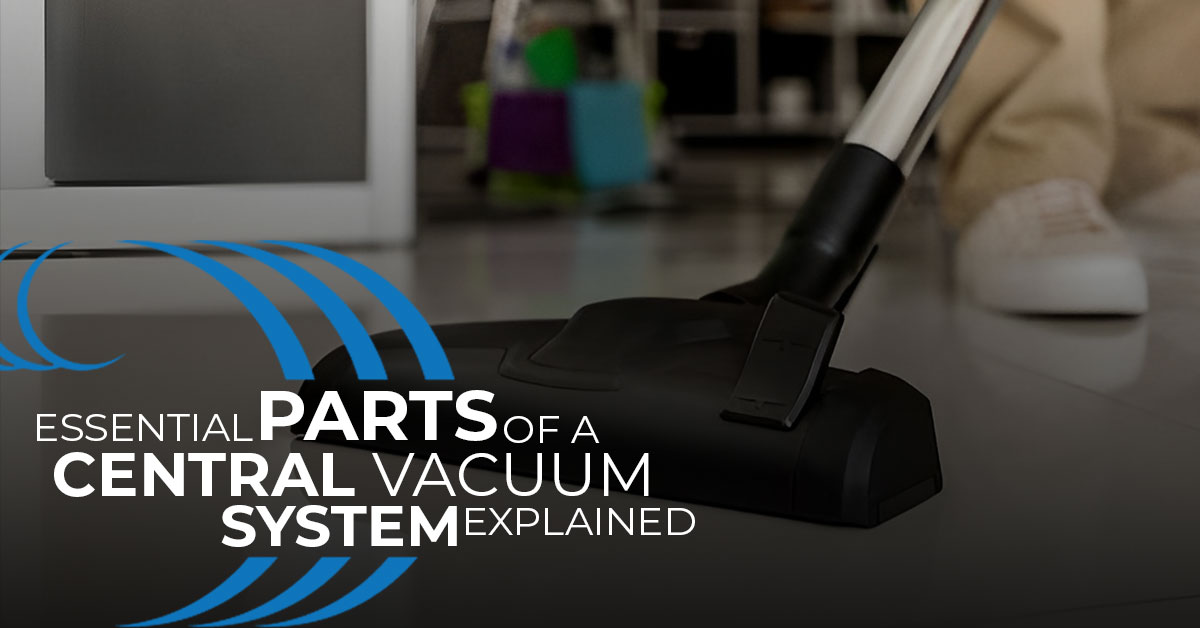
Boosting Productivity in Office Buildings with Central Vacuum
In today’s fast-paced work environment, maintaining a clean and organized office space is crucial for productivity. Office buildings often struggle with keeping their premises clean

A central vacuum system is an efficient and convenient cleaning solution for both residential and commercial spaces. However, to make the most out of these systems, it’s essential to understand their components. This article will provide an in-depth explanation of the central vacuum system and guide you through its essential parts.
A central vacuum system, unlike traditional vacuum cleaners, is built into your home or commercial space. It consists of a central power unit typically housed in an out-of-the-way location like a basement or garage, and a network of pipes connecting to various inlet valves throughout the building.
The power unit is the heart of any central vacuum system. It houses the motor that generates the suction power and the dirt collection container where all the dust and debris are collected. The power unit is generally larger and more powerful than those found in portable vacuum cleaners, providing superior cleaning ability.
Inlet valves are strategically installed in walls throughout your space. These are the points where you plug in the vacuum hose to start cleaning. They are connected to the central power unit via a network of pipes, enabling efficient cleaning of the entire area without the need to lug around a heavy vacuum cleaner.
The vacuum hose is a critical component connecting the inlet valve to the cleaning attachment. It carries the suction from the power unit to the cleaning tool, allowing various surfaces to be cleaned. The hose’s length and flexibility make it easy to clean hard-to-reach areas.
Cleaning attachments add versatility to the central vacuum system. They include standard floor tools for cleaning carpets and hard floors, dusting brushes for delicate surfaces, upholstery tools for furniture, and crevice tools for tight spaces. Choosing the right attachment can effectively clean different surfaces and materials.
The pipes and tubing form the backbone of the central vacuum system. Installed within the walls of your space, they connect the power unit to the inlet valves. These hidden components create a pathway for the dirt and debris to travel from the cleaning site to the dirt collection container in the power unit.
Located in the power unit, the dirt collection container is where all the collected dirt and debris end up. Depending on the specific model of your central vacuum system, this could be a bag or a filter-equipped canister.
Understanding each component of your central vacuum system can help maintain and troubleshoot the system more effectively. Regular maintenance such as emptying the dirt collection container and cleaning or replacing filters can prolong the life of your system and improve its performance.
In conclusion, a central vacuum system is more than just an innovative cleaning solution; it’s a complex network of components working together to keep your space clean. By understanding these components, you can ensure that your central vacuum system continues to deliver superior cleaning power for years to come.

In today’s fast-paced work environment, maintaining a clean and organized office space is crucial for productivity. Office buildings often struggle with keeping their premises clean

Central vacuums in animal shelters & vet clinic: Explore how these systems boost hygiene, efficiency, and air quality.

In the world of home entertainment, a home theater is a luxury that many homeowners dream of. It’s an immersive experience that brings the magic

A central vacuum system is a significant investment that promises convenience, powerful suction, and improved indoor air quality. However, choosing the right central vacuum hose
Our home automation products are at the forefront of technology, offering a blend of convenience, security, and efficiency. As a Homewave dealer, you’ll be part of a network transforming homes into smart, futuristic spaces.
Embark on this rewarding journey with us and leverage the power of innovative technology.
Please fill out this form and become a Homewave Dealer.